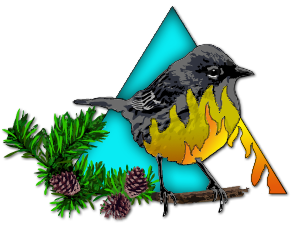Navigation

Upcoming Events
There are no events planned.
Special 3-Part Webinar Series from LANDFIRE, LSFSC, and TPOS
September 17: LANDFIRE 101 -- Randy Swaty, ecologist with The Nature Conservancy, offered a primer to LANDFIRE, aka “LANDFIRE 101,” that explained the suite of tools that are available to those who need science-based data in order to restore/conserve/manage large landscapes in the U.S. Maps and application examples are focused on the TPOS/Oak Savanna and Lake States regions. He described what LANDFIRE is, where to get the products, how you can use them, when and how often the data is updated, and who to contact to learn more -- all in 45 minutes. Though examples and maps referred to these consortia locations, information applied to all landscapes across the U.S.
YouTube Recording
PDF of presentation
October 8: Assessing Needs - Tracy Hmielowski presented “Where should we burn? A Fire Needs Assessment for Wisconsin.” Given the limitations on prescribed fire resources, the Fire Science Consortia have developed a model, also known as the Fire Needs Assessment, to identify high priority areas for management with prescribed fire. We mapped fire dependent vegetation using the LANDFIRE Existing Vegetation Layer (EVT), and ranked management units based on the potential benefits, effort, and challenges associated with using prescribed fire on the landscape. Tracy showed how open access data and stakeholder involvement have shaped this project, and shared the initial results of the Fire Needs Assessment. Tracy is a Fire Information Specialist with the Tallgrass Prairie & Oak Savanna Fire Science Consortium. She is with the Nelson Institute for Environmental Studies at the University of Wisconsin, Madison.
YouTube Recording
PDF of presentation
October 29: Customizing Data - Don Helmbrecht, Wildland Fire Analyst, USDA Forest Service, TEAMS Enterprise Unit, presented “Local Customization of Fuels Data on the Huron-Manistee and Hiawatha National Forests.” Off-the-shelf LANDFIRE data is intended to support broad sub-regional to regional scale strategic planning efforts and may be 3-5 years out of date at the time of application. Don showed how local knowledge and expertise was used to update LANDFIRE data for applicability at finer scales with examples from work on the Huron-Manistee and Hiawatha National Forests.
YouTube Recording
PDF of presentation

.png)